Commentary: Singapore’s heat stress advisory signals a hotter world to come
Education will be key for the Singapore public to safely adapt to warmer weather, but care must be taken against overly frequent or non-specific heat stress warnings, say NTU’s Emma E Ramsay and Perrine Hamel.
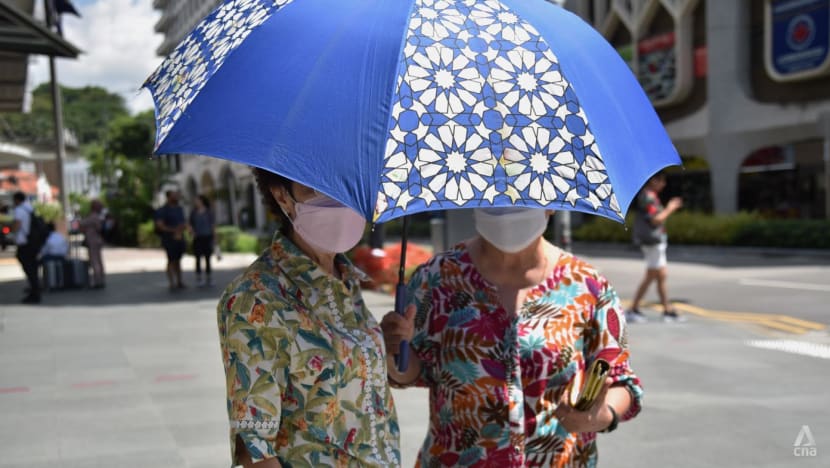
Two women sharing an umbrella under the hot weather in Singapore. (Photo: CNA/Syamil Sapari)
SINGAPORE: As record-breaking temperatures make headlines globally, Singapore is taking action to manage heat risk. In July, the government launched a new advisory that provides the public with real-time information and advice on the risks of heat stress.
Living in a tropical, highly urbanised city, Singaporeans contend with high temperatures and humidity year-round. Yet Singapore has not been spared from “global boiling”, with temperatures hitting 37 degrees Celsius for the first time in decades this May. Hot conditions are expected as El Nino takes full effect.
Singapore’s heat stress advisory uses a measure of heat called the Wet Bulb Globe Temperature (WBGT). Besides temperature, it accounts for the effects of humidity, solar radiation and wind, providing a more accurate measure of what conditions actually feel like and their potential health risks.
Humidity, in particular, is often what makes heat unbearable. Even moderate temperatures, combined with high humidity, can be dangerous for humans. In tropical climates like Singapore, heat and humidity pose an everyday risk, so measuring WBGT, rather than just temperature alone, is essential.
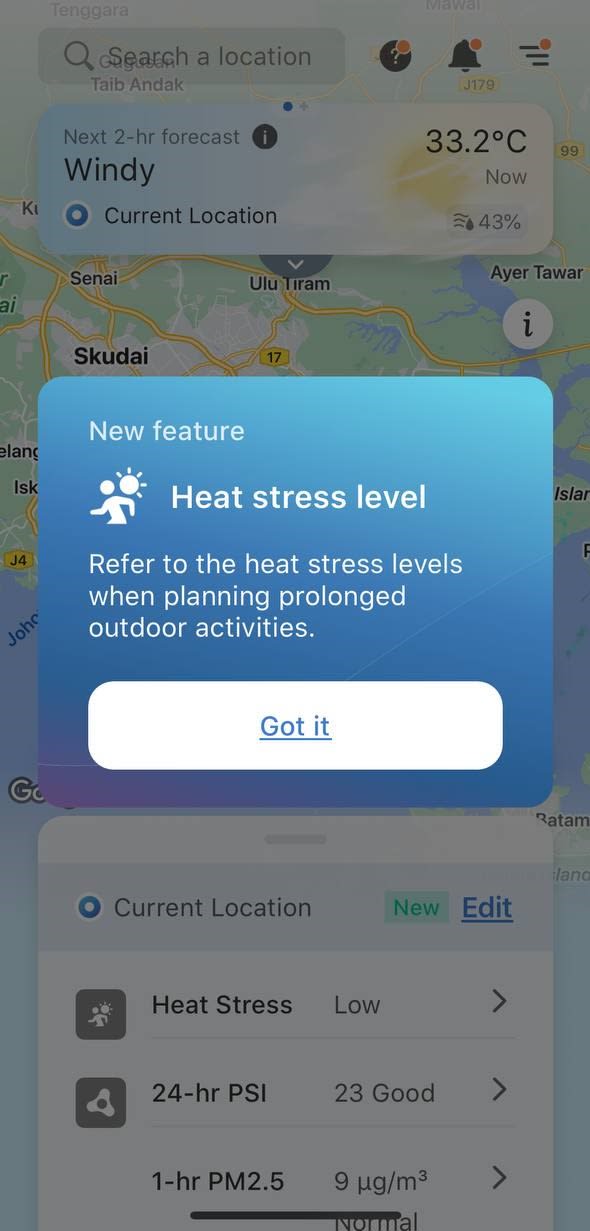
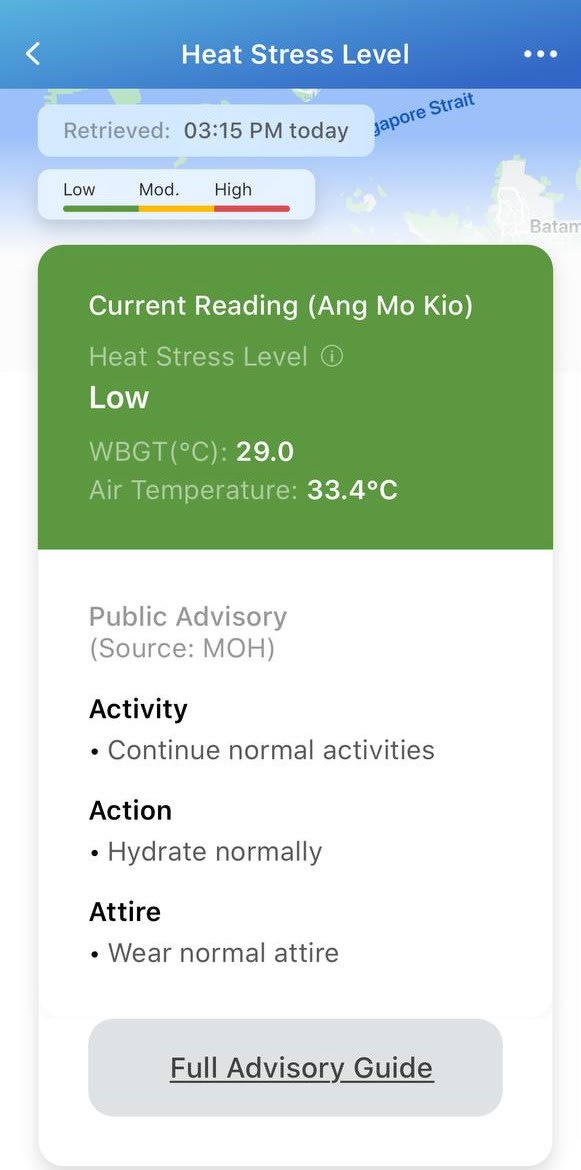
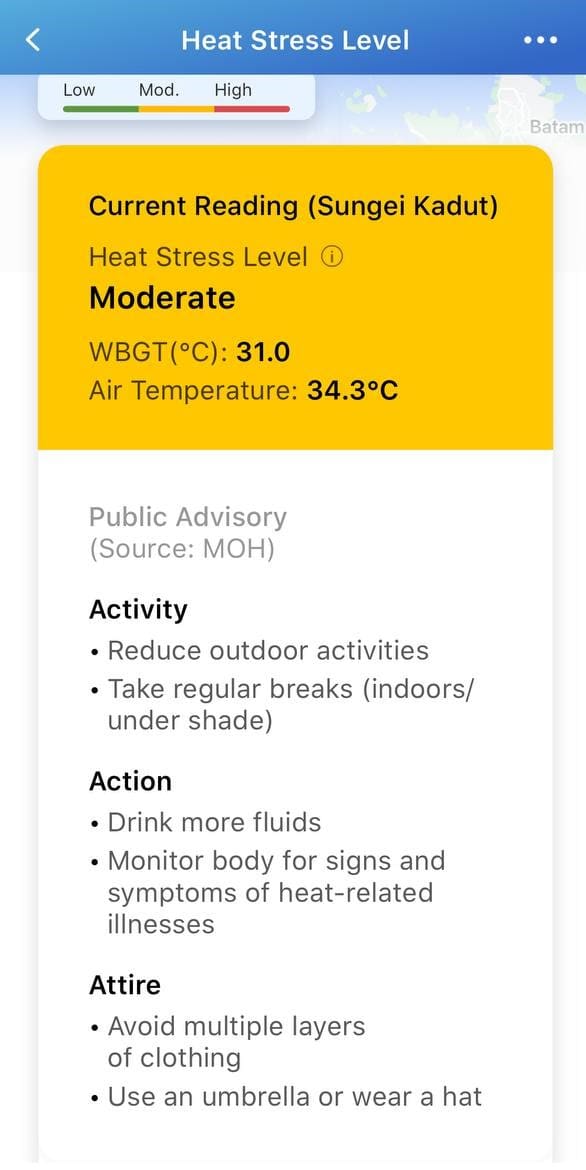
Because the WBGT assumes full sun exposure, the advisory is aimed at managing outdoor physical activity. Traditionally, the WBGT has been used to estimate the impact of heat on outdoor workers, athletes and military personnel, and these groups already have their own heat risk plans in place.
For the public, the heat stress advisory provides broad advice on when prolonged physical activity might be dangerous and how to manage risk by exercising later in the day, staying hydrated or wearing lightweight clothing. This may be common-sense advice but it is nonetheless important in raising awareness as hot days become more frequent.
However, what good would a heat stress advisory be if Singapore sees WBGT crossing into high-risk thresholds on a regular basis? Education will be key to safely adapt to warmer weather, but care must be taken in warning the public too frequently and in non-specific ways, so as not to lead to complacency.
KNOWING YOUR LOCAL RISK
WBGT is currently measured at nine stations across Singapore, with readings updated every 15 minutes. This allows Singaporeans to check their real-time heat risk from the station closest to them.
This localised information is welcome, but still lacking granularity. Within a given town or region, heat risk varies quite substantially. Temperatures tend to be hotter in more urbanised areas, known as the urban heat island effect. Conversely, areas with high vegetation can be cooler because plants provide cooling via shade and evapotranspiration.
With only nine stations, these nuances are currently lost, an issue that will be addressed over the next two years as the network of stations is set to expand. With more granularity, the heat advisory can help urban planners visualise the benefits of green spaces across the island. Developing these green spaces is important for people’s physical and mental health, as well as for providing much needed cooling.
A next step could be to provide heat stress information alongside weather forecasts, so that we can plan ahead for high heat-risk days. Temperature forecasts are already common. But because other factors like humidity and solar radiation are critical to estimating heat stress, these need to be predicted reliably, a challenge that is still very much a frontier of science.
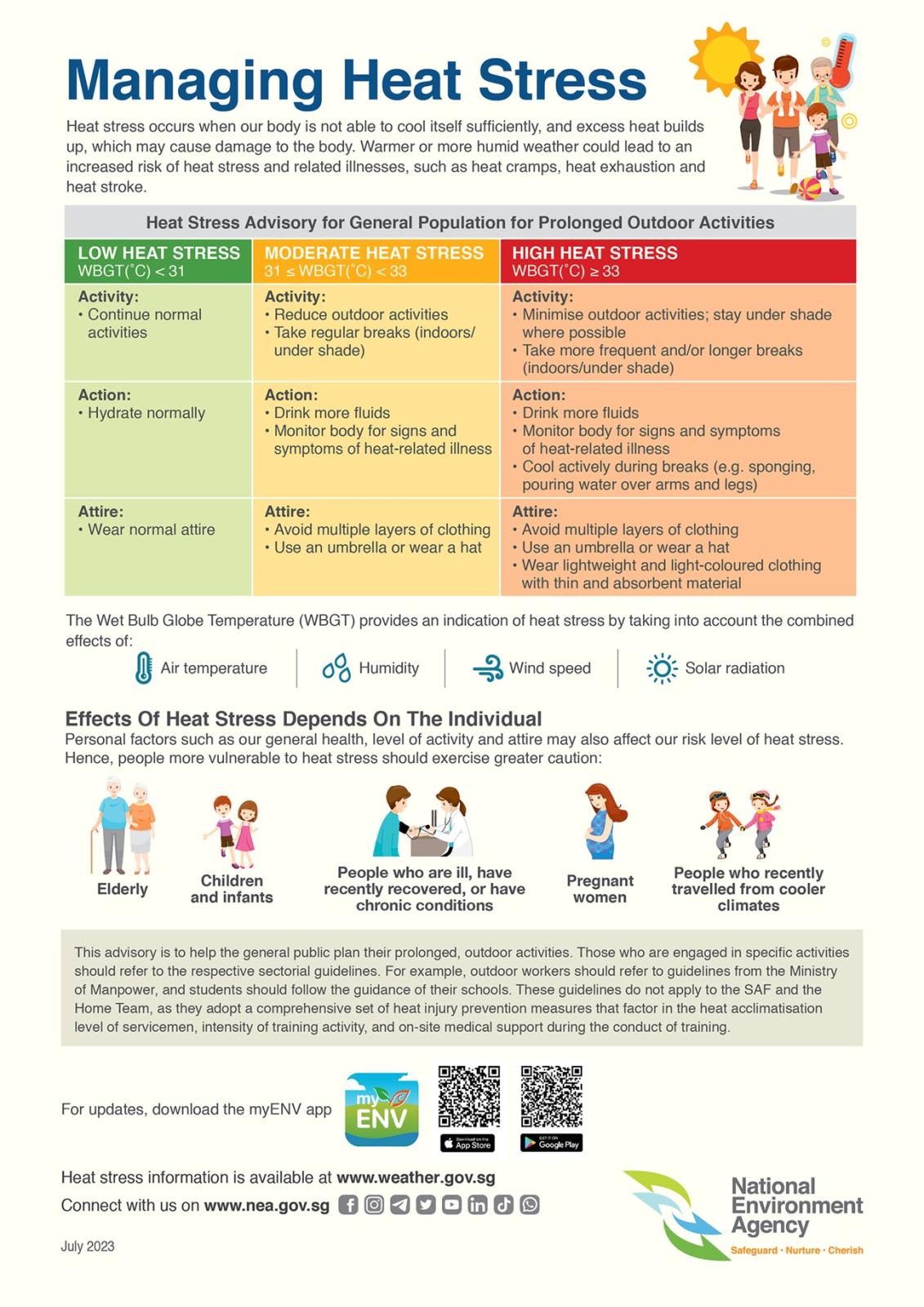
MANAGING HEAT RISK IN A WARMING WORLD
The heat stress advisory is an important first step to build awareness of the dangers of heat exposure and guide Singaporeans towards behavioural adaptations. Further workplace and lifestyle changes will be inevitable as extremes become more frequent and severe.
In Singapore, we are fortunate to be able to seek refuge from the heat in air-conditioned public spaces like malls and public transport, if not in our own homes. Though this access comes with an economic and energy cost, many of our Southeast Asian neighbours are not so fortunate.
In addition, people who work outdoors, such as construction workers or delivery riders, have less opportunities to take breaks from the heat and bear an inherently higher risk of heat stress and related injuries. As well as physical heat illness, heat exposure can also cause mental fatigue and impact decision-making, impairing our ability to work and go about our lives safely.
On top of climate change, urban growth in Singapore threatens to exacerbate heat stress as forested areas make way for housing and industrial development. According to a National University of Singapore (NUS) study published in 2022, high-rise urban development can push temperatures by up to 4.3 degrees Celsius compared to undeveloped land, whereas residential areas with more vegetation are around 2.5 degrees Celsius warmer.
NUS researchers also found that in Singapore, heat stress risk is highest in the Central Region where dense urban development overlaps with large populations of elderly people. Integrating green spaces into urban development and protecting existing forests must be a priority to mitigate heat extremes and protect our most vulnerable people.
Yet heat not only threatens the health of humans, but also the trees and vegetation that provide essential cooling. A 2022 study published in Nature considered all of Singapore’s urban trees vulnerable to climate change as they will experience future temperatures and precipitation far beyond the conditions they are currently adapted to.
Together with colleagues from the Cooling Singapore 2.0 project, we are seeking to understand how trees will cope in a warmer world, and what it means for the future of parks management.
Building a sustainable and resilient city must also ensure the protection and management of the ecosystems that we depend on. Although our research will help address some of these questions, we must work across sectors - including urban design and policymaking - to reimagine the future of Singapore under an unforgiving climate.
Emma E Ramsay is Postdoctoral Research Fellow at the Asian School of the Environment at Nanyang Technological University (NTU) Singapore, and Perrine Hamel is Assistant Professor at NTU’s Asian School of the Environment and Principal Investigator at the Earth Observatory of Singapore.




















